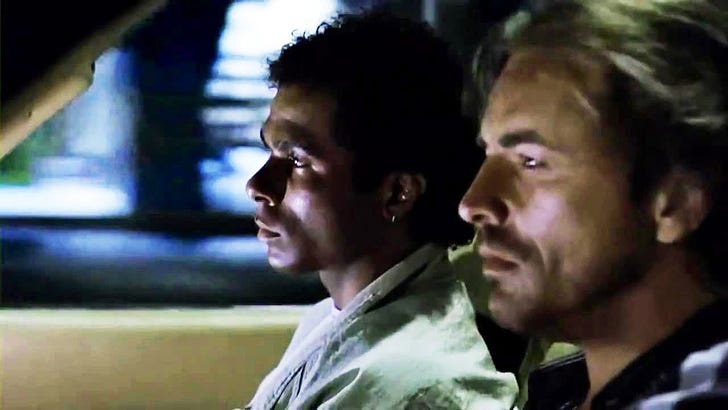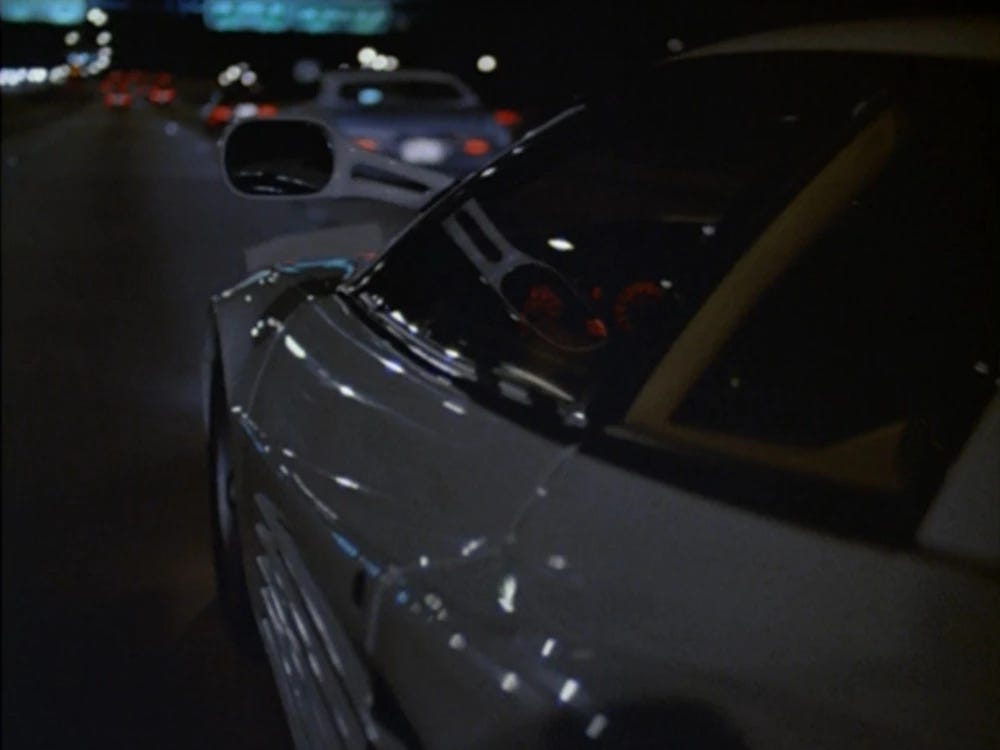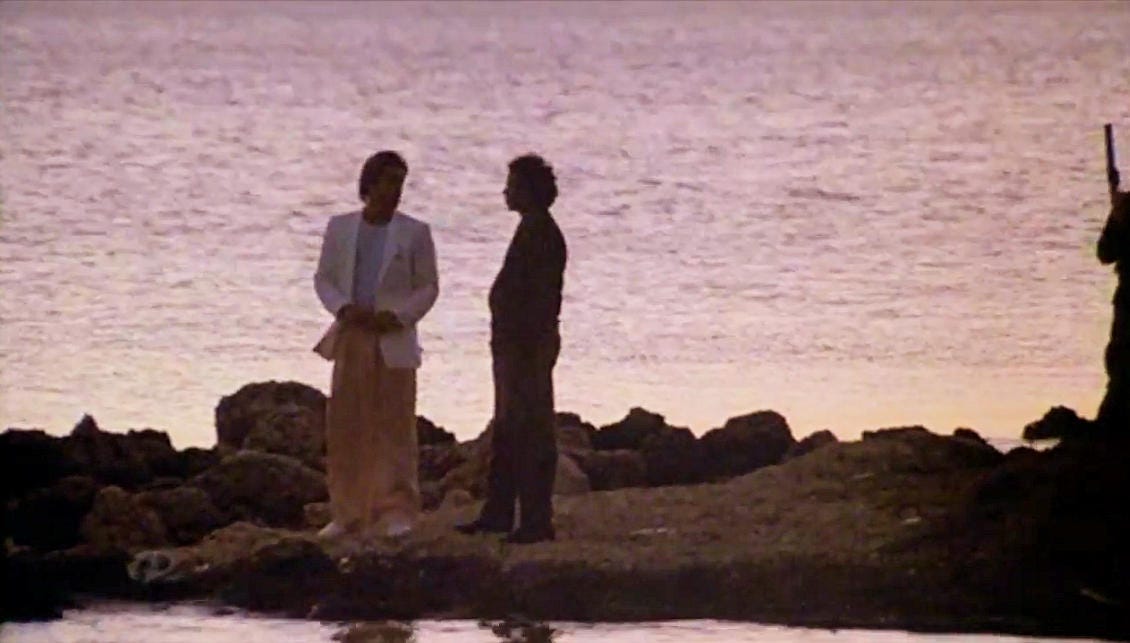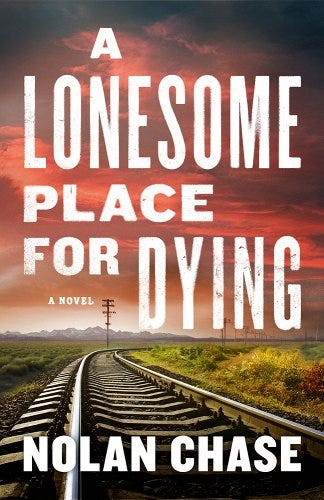In the memory of the culture, Miami Vice was a fun, colorful, kitschy buddy cop show set to 80s rock. This isn’t entirely wrong. Great cars and clothes, terrific production values—in fact I’d say it’s the best-looking series ever made.
But this misses a huge component of what makes the series memorable. It’s the same component found in producer/director Michael Mann’s films, like Heat, Thief, The Insider, and Collateral. The show, like those films, is about people so driven they lose sight of who they are. Season one of Miami Vice is fun, yes, but it’s also serious as shit.
The famous opening scene of the show—where Sonny Crockett (Don Johnson) steers a Ferrari into the night, while Rico Tubbs (Philip Michael Thomas) loads and checks a shotgun—is a telling example.
It’s a scene with style to burn. But it’s also a telling character moment, not just the calm before the storm, but telegraphing the storm to come, like the beginning of Once Upon a Time in the West. The characters alone with their thoughts and apprehensions before everything goes to hell.
When the show is at its best, the style serves the story. The musical interludes in Miami Vice are usually written off as excuses for including hits of the day by Collins, Peter Gabriel, Tina Turner or The Dire Straits. I’d argue they also serve as silent film scenes of people adrift, scored to reflect the characters’ mood as they reckon with the choices they’ve made. They add meaning to the action that usually follows.
This is something Mann uses in his films as well—the moment in Collateral where Tom Cruise’s hit man Vincent sees a coyote in the road, or the final confrontation in Manhunter.
Whatever the intention of the scenes, their effect is to create an interior life to Crockett and Tubbs that says more than dialog could. So much of modern TV is two characters talking, it’s refreshing to see anyone shut the fuck up and simply exist.
In a way it’s fitting that this first scene is scored to Phil Collins’s “In the Air Tonight,” since it sets the tone for the show as a whole. Between the strange milestones of Genesis and Tarzan, Phil Collins wrote some dark, rhythmic, and achingly sincere songs, “In the Air” being one of his best. Both Collins and Miami Vice are so associated with the decade that they became punchlines, distorting what made them great in the first place. They became lesser in the public mind and thus easier to dismiss.
Crockett and Tubbs are vice cops, frequently going undercover as blockade runners or middlemen in the drug world. Crockett is a Viet Nam vet, divorced and estranged from his son. He lives on a boat with his pet alligator, dresses in pastel Armani suits, and drives a black Ferrari. Beneath the trappings of success, though, he’s a lonely and self-loathing guy, far more comfortable playing “Sonny Burnett” the drug dealer than being himself. He’s Ian Fleming’s James Bond, working domestically.
Tubbs is a New York expat who arrives chasing after the dealer who killed his brother. A far more versatile undercover operative, Tubbs can match Crockett’s flash when called upon, but can also adopt a Caribbean accent or AAVE to move virtually anywhere in Miami society. If Crockett’s flaw is being too much himself as his undercover character, Tubbs’s is that having mastered the art of code switching, he’s no longer sure exactly where he fits in.
Their coworkers Gina Calabrese (Saundra Santiago) and Trudy Joplin (Olivia Brown) frequently pose as call girls or escorts. Zito and Switek (Michael Talbot and John Diehl) are the comic relief, handling surveillance from an exterminator van with bug antennae.
Early on the show swapped out Lt. Rodriguez (Gregory Sierra) for Lt. Martin Castillo (Edward James Olmos), a huge upgrade. Olmos plays Castillo as intense, no bullshit, but loyal and willing to bet on his team.
The guest stars and supporting cast are a wild mix of character actors, up and coming talent, and music world guest stars. It’s a little disorienting to have a slow-burn investigative scene that could have been ripped from Manhunter suddenly followed by one of the Eagles showing up (or worse, someone from Kiss). But the storytelling is solid and consistent over the first season.
A couple of highlights:
“The Home Invaders,” directed by Abel Ferrara, features a crew of violent youths who rob and murder wealthy older couples. Crockett and Castillo are brought in to assist a floundering investigation led by Crockett’s former mentor. In one of the best “detectives sitting in a room talking out a solution” scenes ever, Castillo figures out the pattern behind the attacks.
“The Maze” involves a trio of cop-killing brothers who barricade themselves in a tenement, holding the squatters who live there as hostages. Tubbs sneaks inside, posing as a Caribbean drifter. Tensions ramp up in the building and outside of it, as Crockett argues with the hostage negotiator (Joe Morton) about whether or not to breach and rescue his partner.
“Rite of Passage” has Pam Grier show up as a New York cop and Tubbs’s old flame, in town looking for her sister, who’s been lured into prostitution by a pimp (John Turturro). A rescue operation turns into a quest for vengeance, with Tubbs trying to negotiate the right thing to do.
Season one of Miami Vice is stylishly ambitious storytelling about flawed cops lost in a futile drug war. It has more claim to the term ‘prestige television’ than most shows that came after it. And while Mann didn’t direct or write most of the show, it has his stylistic prints on nearly every shot.
I only wish he’d used his old production logo for Heat or Ferrari:











Great piece. I have series one of DVD somewhere and have been meaning to watch it, as I have never seen any off the show. Your comments could be the fuel I need to get that happening.
Next do "The Cows of October."